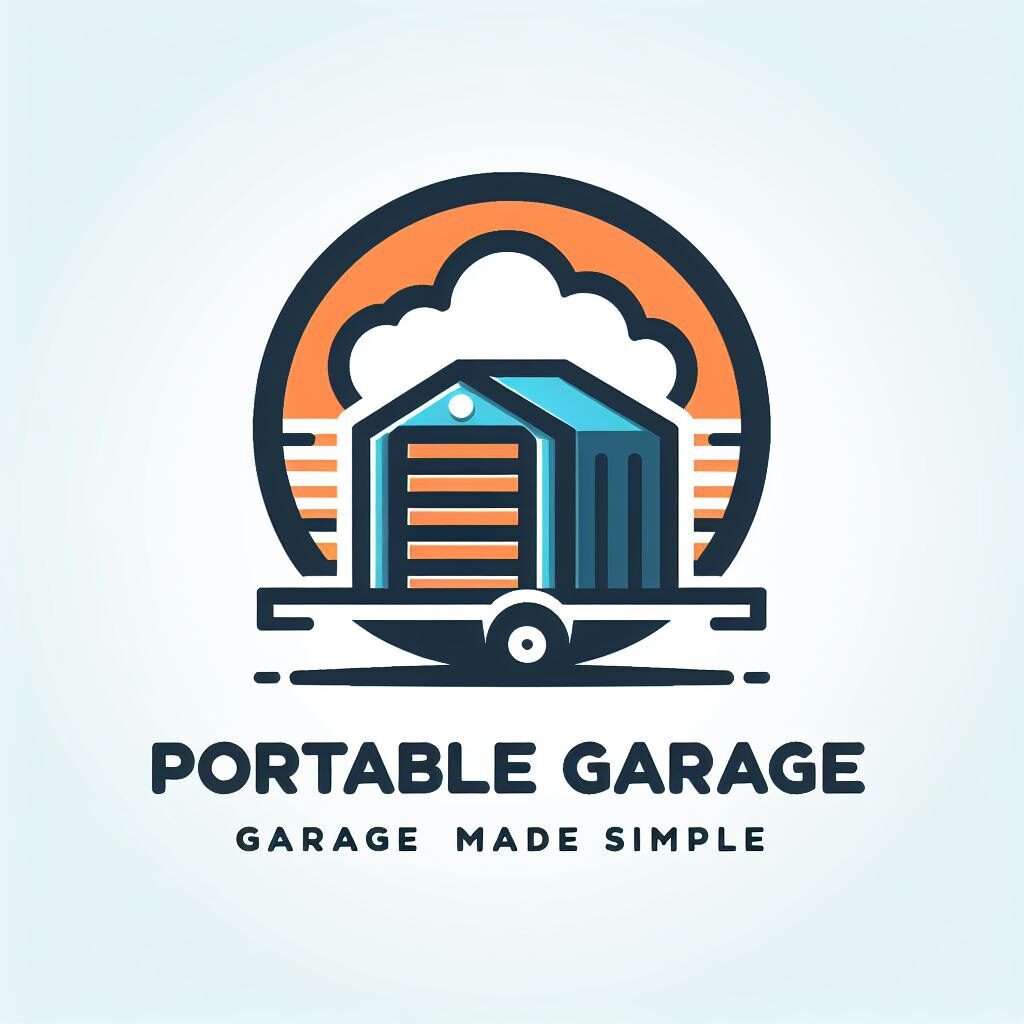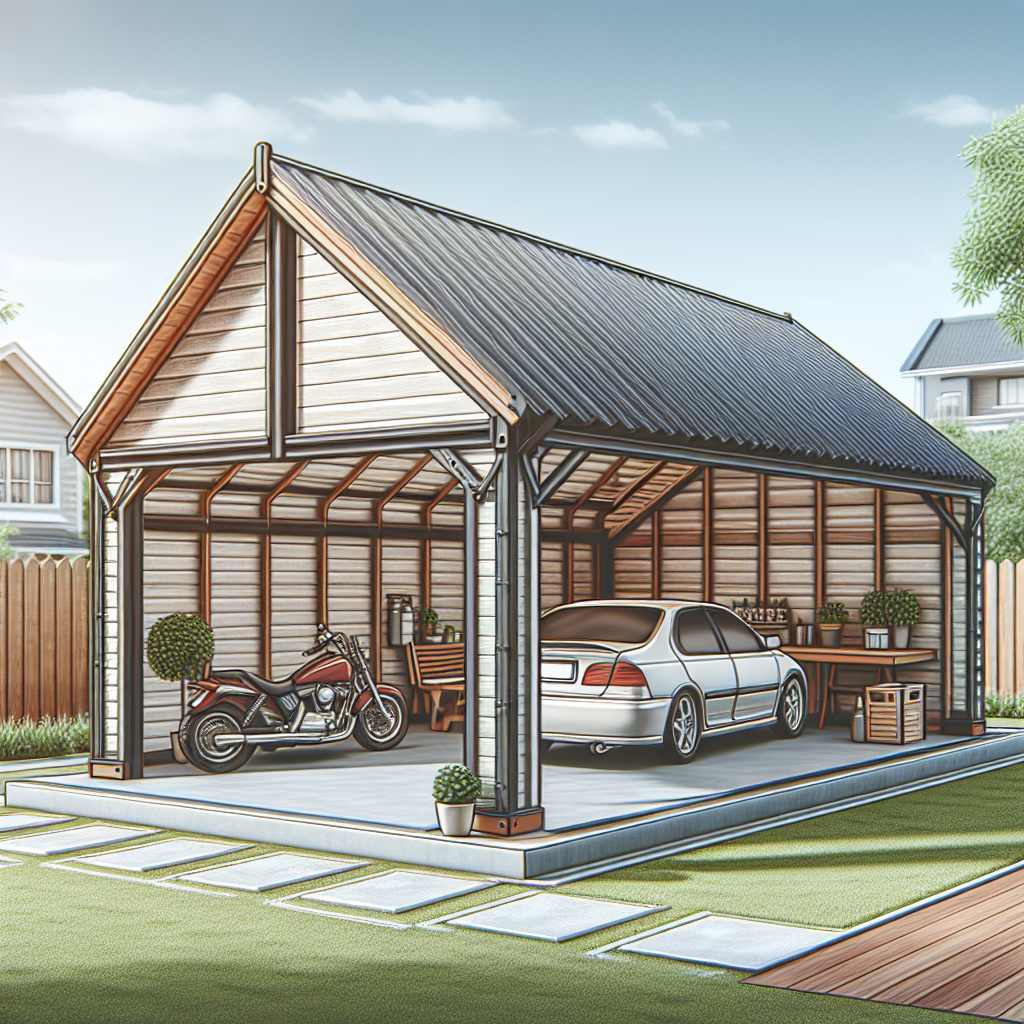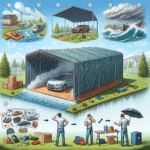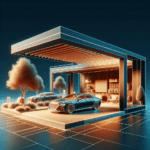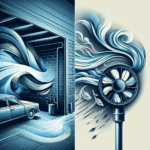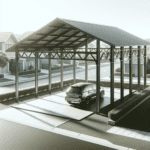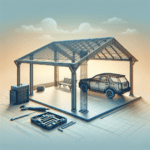If you’re considering using a carport to protect your vehicle, it’s important to be aware of the potential drawbacks. While carports offer a cost-effective alternative to garages and can provide shelter from the elements, they may not be the perfect solution for everyone. In this article, we’ll explore some of the disadvantages of using a carport, helping you make an informed decision about whether it’s the right choice for you and your car.
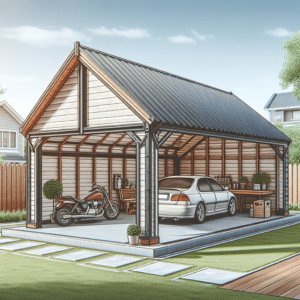
Lack of security
No protection from theft or vandalism
One of the major drawbacks of using a carport is the lack of protection from theft or vandalism. Unlike a garage, which provides a secure and enclosed space for your vehicle, a carport leaves your car exposed and vulnerable. This lack of protection makes it attractive to potential thieves or vandals, as they can easily access your vehicle without any barriers. This can be especially concerning in high-crime areas or if you own a more valuable or desirable car.
Restricted access to the car
Another drawback is the restricted access to your car. While a carport provides some shelter from the elements, it does not offer the same level of security as a garage. You may need to use a lock or chain to secure your vehicle, which can be time-consuming and inconvenient. Additionally, if you have multiple cars or need to access the trunk frequently, maneuvering around other vehicles or obstacles in a carport can be a challenge, leading to potential damage to your car or other belongings.
Limited protection from the elements
Exposure to extreme weather conditions
Carports are known for their lack of insulation and protection from extreme weather conditions. While they may provide some relief from direct sunlight or light rain, they do not shield your vehicle from more severe weather elements such as heavy rain, strong winds, or snowstorms. This exposure can result in damage to the exterior of your car, including paint fade, rust, or even hail damage. It can also contribute to increased wear and tear on the interior, such as upholstery damage or even mold growth in humid climates.
Leaves and debris accumulation
Without walls or barriers, carports are susceptible to leaves and debris accumulation. This can be particularly troublesome during the fall season when leaves are shed from nearby trees and can clog drainage systems, leading to potential water damage. Additionally, the accumulation of leaves and debris under your carport can attract pests or insects, creating an unsightly and unhygienic environment.
No protection against hail or falling objects
Perhaps one of the most significant drawbacks of using a carport is the lack of protection against hail or falling objects. While a garage shields your car from these potential hazards, a carport leaves it exposed and vulnerable. A severe hailstorm can cause extensive damage to your vehicle, including dents, cracks, or shattered windows. Similarly, falling branches, debris, or even accidents involving nearby construction or tree trimming activities can result in costly repairs or total write-offs.
Minimal privacy
Easy visibility of the car from the street
If privacy is a concern for you, using a carport may not be the ideal choice. With its open design, your vehicle is easily visible to passersby and neighbors from the street. This lack of privacy can make you feel exposed and uncomfortable, especially if you value your personal space or have valuable items in your car. It also increases the risk of potential theft or vandalism, as criminals can quickly assess whether your car is worth targeting.
Reduced privacy for personal belongings
In addition to your car’s visibility, using a carport also reduces privacy for any personal belongings you may have in your vehicle. While garages provide enclosed storage space, a carport leaves your belongings susceptible to prying eyes. This makes it less ideal for storing valuable items or even personal documents that could potentially be used for identity theft. If privacy and security are important to you, choosing a garage or covered parking option may be a better solution.
Not suitable for all types of vehicles
Size restrictions for larger vehicles
One major drawback of carports is their size limitations, especially for larger vehicles such as SUVs or trucks. Most standard-sized carports are designed to accommodate regular sedan-sized cars, leaving limited space for larger vehicles. This can result in difficulties maneuvering your vehicle in and out of the carport, potentially causing damage to your car or the carport structure itself. If you own a larger vehicle, it is worth considering a garage or alternative parking solution that provides ample space for your specific needs.
No protection for RVs or boats with tall structures
Carports are also not suitable for vehicles with tall structures, such as RVs (recreational vehicles) or boats. Due to their height and larger dimensions, these vehicles require more substantial protection to prevent damage from the elements. Unfortunately, carports lack the necessary height clearance and structural support to accommodate these types of vehicles properly. If you own an RV or boat, you will need to explore other options, such as RV storage facilities or dedicated boat docks, to ensure the safety and protection of your investment.
Requires regular maintenance
Cleaning and removal of debris
Maintaining a carport requires regular cleaning and removal of debris. As mentioned earlier, leaves, branches, and other debris can accumulate in the carport, causing drainage issues and attracting pests. It is essential to consistently clean the carport, including its roof and gutters, to prevent clogging and potential water damage. Additionally, periodically sweeping or pressure washing the carport surface can help remove dirt, grime, and stains that can accumulate over time.
Repairs and repainting
Carports are not immune to wear and tear, and regular maintenance may include repairs and repainting. Exposure to the elements, such as sun, rain, and temperature fluctuations, can cause the carport’s structure to weaken or develop cracks. These damages should be promptly addressed to ensure the carport’s stability and prevent further deterioration. Additionally, repainting the carport surface can help maintain its appearance and protect it from corrosion or rust.
Limited functionality
No storage space for additional items
One of the drawbacks of using a carport is the limited storage space it provides. Unlike a garage, which offers the opportunity to store additional items alongside your vehicle, a carport only serves as a shelter for your car. This lack of storage space can be a disadvantage, especially if you have bikes, tools, or other bulky items that require a designated storage area. You may need to find alternative storage solutions, such as sheds or storage units, to accommodate these additional belongings.
Inconvenient for daily use
While carports may offer some protection from the elements, they can still be inconvenient for daily use. Unlike a garage, which provides immediate and easy access to your vehicle, a carport may require maneuvering around other parked cars or obstacles, depending on the size of the carport and the number of vehicles using it. This can be time-consuming, especially during busy mornings when you’re rushing to get to work or drop off your kids at school. If convenience is a priority for you, a garage or covered parking option may be a more suitable choice.
Not ideal for working on the car
If you’re someone who enjoys working on their car or performing maintenance tasks, a carport may not be the most ideal setup. With its open design and limited space, it can be challenging to work comfortably on your vehicle, especially if you need additional tools or equipment. Without proper shelter or enclosed walls, you’re also at the mercy of weather conditions, which can be inconvenient or even hazardous if you’re dealing with electrical components or working with fluids. A garage or dedicated workspace would provide a more suitable environment for such activities.
Less aesthetic appeal
May not blend well with the overall property design
Carports, especially standard designs, may not blend well with the overall design of your property. They can appear utilitarian and lack the aesthetic appeal of a well-designed garage or covered parking structure. This can detract from the visual appeal of your property, especially if you have put effort into creating a cohesive and attractive exterior. If aesthetics are a priority for you and you want your property to have a more cohesive and visually pleasing look, exploring alternative parking options or designing a more visually appealing carport may be worth considering.
Limits curb appeal
In addition to potentially clashing with your property’s overall design, carports can limit the curb appeal of your home. Curb appeal refers to the attractiveness of a property when viewed from the street, and it plays a significant role in creating a positive first impression for visitors or potential buyers. While a well-maintained carport can still look presentable, it may not have the same visual impact as a garage or covered parking structure. This can be a disadvantage if you’re looking to enhance the curb appeal of your property for personal satisfaction or potential resale value.
Higher risk of accidental damage
Potential for damage from nearby activities
Using a carport exposes your vehicle to potential damage from nearby activities. If you live in a neighborhood or area with ongoing construction, landscaping, or roadwork, there is a higher risk of accidental damage to your car. Debris, equipment, or even careless workers can cause scratches, dents, or more severe damage to your vehicle. While accidents can happen anywhere, a carport provides less protection compared to a garage, where your vehicle would be shielded from these potential mishaps.
Vulnerable to accidental impacts or collisions
Carports also leave your vehicle more vulnerable to accidental impacts or collisions. Due to their open design and lack of barriers, it is easier for vehicles or objects to accidentally collide with your car. This can result in scratches, dents, or, in more severe cases, significant damage. Carports located near high-traffic or congested areas are particularly susceptible to this type of accidental damage. If you live in such an area or have concerns about accidental impacts, a more enclosed parking solution like a garage may offer better protection for your vehicle.
Less protection from theft
Carport provides limited deterrent to thieves
While a carport can provide some shelter for your vehicle, it offers limited deterrent to potential thieves. With its open design, a carport does not offer the same level of protection against theft as a garage or covered parking structure. Thieves can easily access your vehicle and its contents, increasing the risk of theft or damage. If security is a top priority for you, investing in a more secure parking option with locked doors and additional security features would be a better choice.
Easy access to the car and its contents
In addition to limited deterrence, a carport also provides easy access to your car and its contents. Without locked doors or restricted entry points, anyone can approach your vehicle and potentially tamper with it or steal valuables from inside. This is particularly concerning if you have expensive car accessories, electronic devices, or personal belongings stored in your car. If protecting your vehicle and its contents from theft is essential to you, it is advisable to consider a more secure parking solution, such as a garage or gated parking area.
Limited resale value
Carports may not add significant value to the property
One of the drawbacks of using a carport is its potential impact on the resale value of your property. While a well-designed and high-quality carport may add some value, it generally does not contribute as much to the overall value as a garage or covered parking structure would. Potential buyers may prioritize properties with enclosed garages, as they offer increased security, protection, and storage options. If you’re looking to maximize the resale value of your property, investing in a garage or exploring alternative parking options may yield a higher return on investment.
Potential buyers may prefer a garage or covered parking
Furthermore, potential buyers may have a preference for properties with garages or covered parking options. A garage provides additional security, privacy, and convenience, making it a more desirable feature for many buyers. This preference can limit the pool of potential buyers for your property if you only have a carport. If you anticipate selling your property in the future, it is worth considering the potential impact of a carport on the marketability and appeal of your home. Expanding or converting the carport into a garage or exploring other covered parking solutions may make your property more attractive to potential buyers.
In conclusion, while carports offer some advantages such as cost-effectiveness and basic protection from the elements, there are several drawbacks to consider. The lack of security, limited protection from extreme weather, minimal privacy, and size restrictions for larger vehicles are some factors that make carports less desirable compared to garages or covered parking structures. Carports also require regular maintenance and may limit the functionality, aesthetic appeal, and resale value of your property. If you prioritize security, convenience, or maximizing the value of your property, exploring alternative parking options or investing in a garage may be a more suitable choice.
